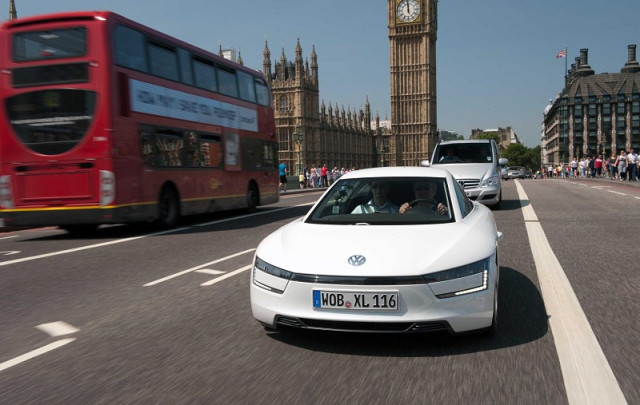


Volkswagen’s futuristic XL1, the world’s most fuel-efficient production hybrid car, took to the streets of the capital yesterday.
The two-seat diesel-electric hybrid, which achieves a fuel consumption figure of 313 mpg while emitting just 21 g/km of carbon dioxide, turned heads as it passed through the streets of the city, with its white carbon fibre body shell standing out in contrast to black cabs and red double-decker buses.
While one XL1 made its way to the Goodwood Festival of Speed to take pride of place on the Volkswagen stand and make its way up the famous hill climb, another crossed the capital, heading to Buckingham Palace where it will be displayed as part of the Coronation Festival this weekend (for more details see below).
The super-innovative, ultra-frugal XL1 model looks like a vision of the future, but it is in fact already in limited production. Its body is made largely of carbon-fibre reinforced polymer, while its drivetrain melds a two-cylinder 800 cc diesel engine with an electric motor. Like any good supercar, it is also low (at 1,282 mm high it is lower than a Porsche Boxster) and features scissor-opening doors (although its 120-litre boot does make it somewhat more practical than supercar enthusiasts may like).
To achieve the target fuel consumption figure the XL1 was aerodynamically optimised, adopting the classic ‘tear drop’ shape and utilising innovations such as removing traditional wing mirrors and replacing them with small cameras called e-Mirrors which transmit exterior images to interior displays.
The XL1 is manufactured (left-hand drive only) at Volkswagen’s Osnabrück factory in Germany (which also produces the Golf Cabriolet and Porsche Boxster). Unlike these cars, the XL1 is ‘handcrafted’ using small series production processes. An initial production run of 250 XL1 vehicles will be made. Pricing and sales channels are yet to be confirmed.













